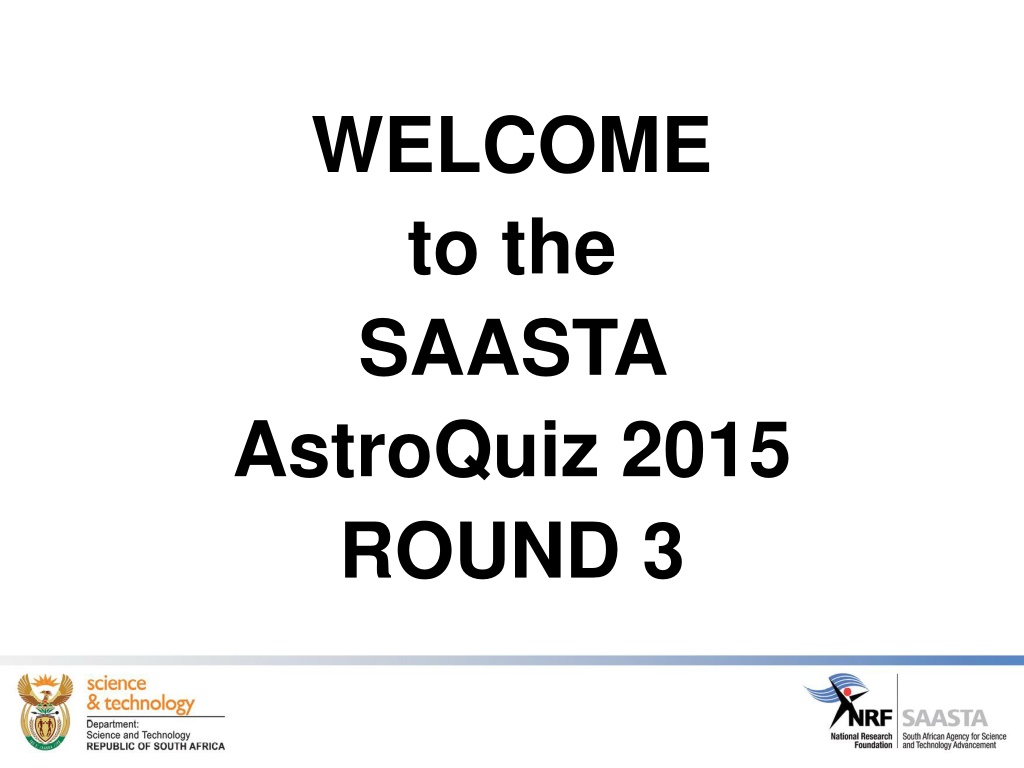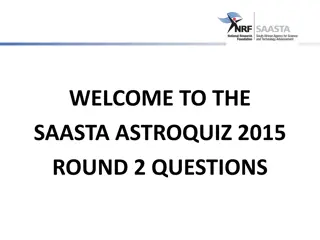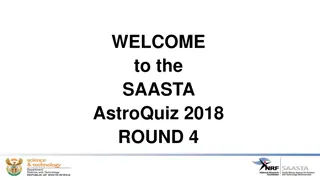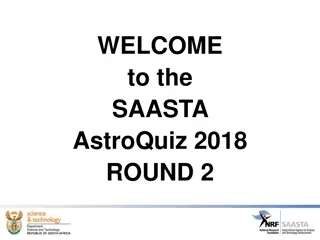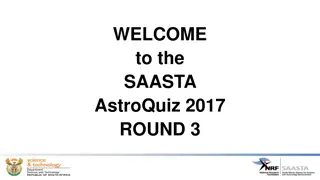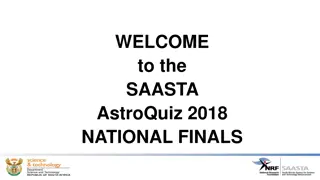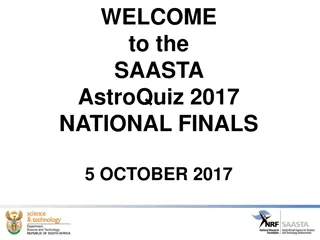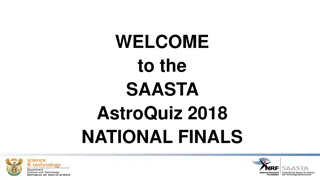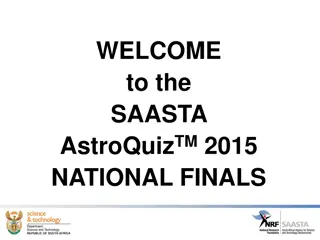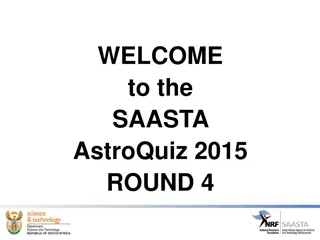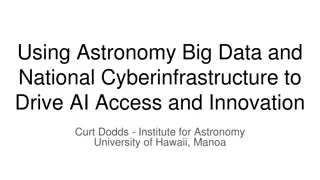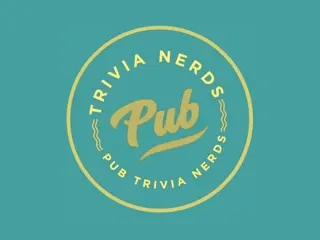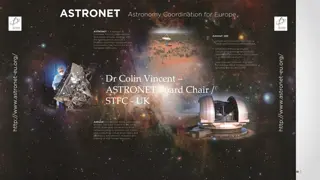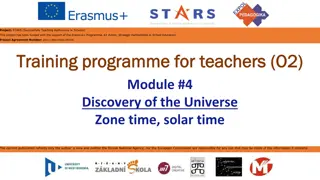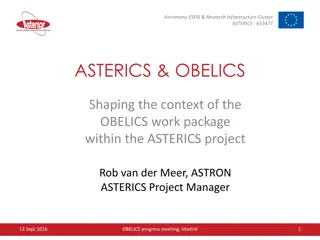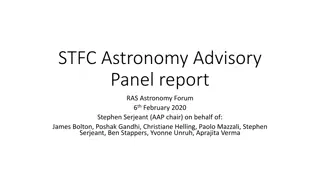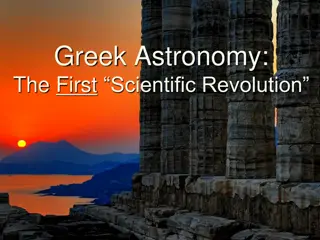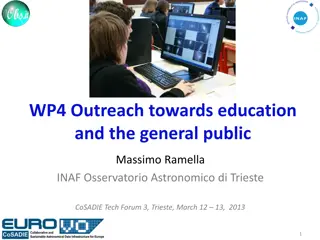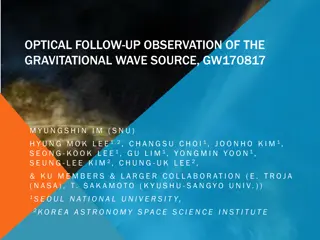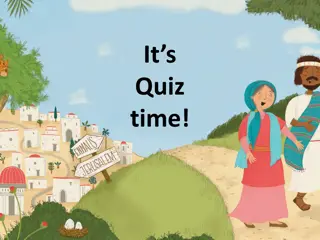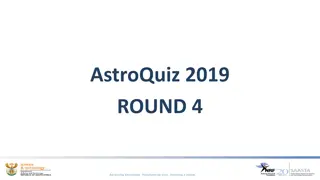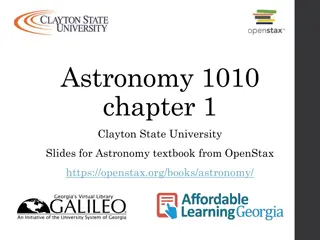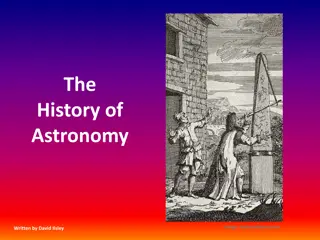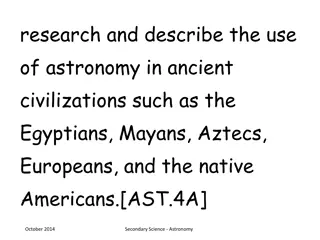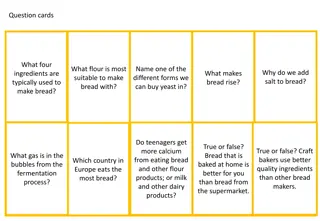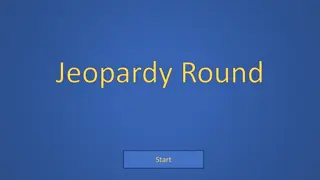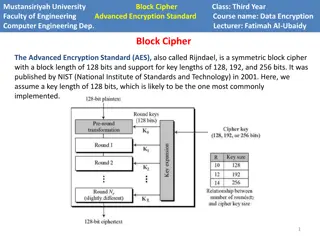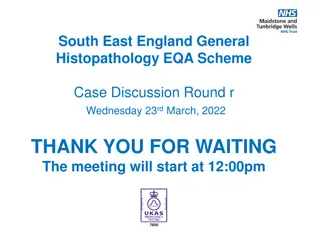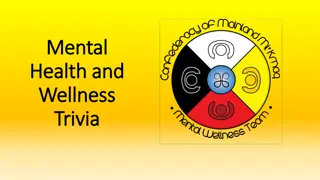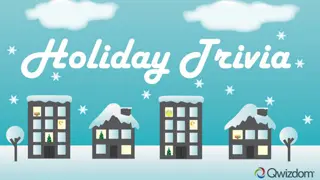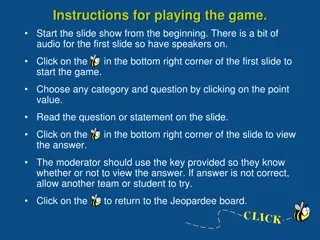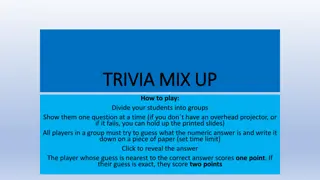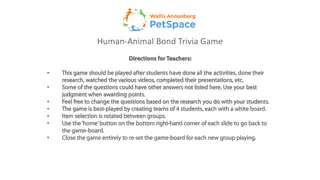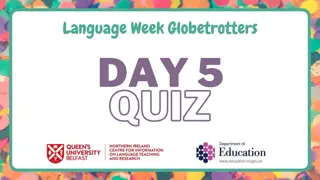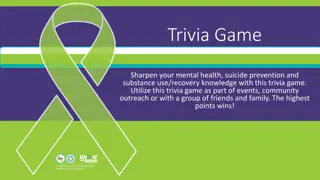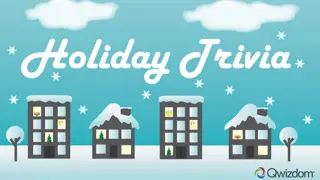SAASTA AstroQuiz 2015 Round 3 - Astronomy Trivia Questions
Test your astronomy knowledge with these 9 questions from the SAASTA AstroQuiz 2015 Round 3. Explore topics such as stars, planets, spacecraft missions, and celestial events. From Proxima Centauri to Blue Moons, challenge yourself with interesting facts about our universe.
Download Presentation

Please find below an Image/Link to download the presentation.
The content on the website is provided AS IS for your information and personal use only. It may not be sold, licensed, or shared on other websites without obtaining consent from the author. Download presentation by click this link. If you encounter any issues during the download, it is possible that the publisher has removed the file from their server.
E N D
Presentation Transcript
WELCOME to the SAASTA AstroQuiz 2015 ROUND 3
QUESTION 1 Which of the following is true about Proxima Centauri, the 2ndclosest star to Earth? A. It is a red dwarf and discovered in 1915 B. It is a yellow dwarf and discovered in 1915 C. It is a red dwarf and discovered in 1815 D. It is a yellow dwarf and discovered in 1815
QUESTION 2 The Sun and Sirius are yellow and white stars respectively. Which of the following is true? A. Sirius has a greater star magnitude value than the Sun B. Sirius has a lower star magnitude value than the Sun
QUESTION 3 In a neutron star, electrons and protons are squeezed together to form ____ A. Nuclei B. Neutrons C. Neutrals D. Neutrinos
QUESTION 4 Which of the following planets has zero satellites and is covered with high mountains, valleys & craters? A. Mars B. Venus C. Earth D. Mercury
QUESTION 5 Which spacecraft passed one of the dwarf planets in July 2015? A. Mariner Mark II B. New Horizons C. Viking D. Cassini
QUESTION 6 Which dwarf planet was passed by that spacecraft? A. Ceres B. Eris C. Pluto D. Haumea
QUESTION 7 When was that spacecraft launched? A. January 2006 B. January 2005 C. July 2006 D. July 2005
QUESTION 8 One of the definitions of a Blue Moon is that it is a second full moon in a month. When in 2015 did we have a blue moon? A. July B. June C. May D. August
QUESTION 9 Which two bright planets were seen with the naked eye in the western sky after sunset around June/July 2015? A. Jupiter & Saturn B. Saturn & Venus C. Jupiter & Venus D. Jupiter & Mars
QUESTION 10 During which moon phase can we experience a total solar eclipse? A. Full Moon B. New Moon C. First Quarter D. Last Quarter
QUESTION 11 Considering the diameters of Jupiter and that of Earth, approximately how many Earths can one fit inside Jupiter horizontally? A. 11 B. 130 228 C. 0,09 D. 155 740
QUESTION 12 This planet has satellites, craters and higher mountain peaks than any other planet. Which planet is it? A. Mercury B. Mars C. Venus D. Earth
QUESTION 13 Which celestial body has satellites and a centre of compressed hot liquid of metallic hydrogen? A. Neptune B. Pluto C. Jupiter D. Uranus
QUESTION 14 Which of the following planets is tilted over by approximately 900? A. Earth B. Saturn C. Uranus D. Neptune
QUESTION 15 Which of the following statements about Uranus is false? A. Its diameter is higher than that of Earth B. It is bigger than planet Neptune C. It has 20 satellites discovered so far D. It has lower temperatures than all other known planets
QUESTION 16 The planets of which pair below, represent the biggest planets within their own groups? A. Mercury & Saturn B. Jupiter & Earth C. Uranus & Mercury D. Jupiter & Uranus
QUESTION 17 Approximately how long in Earth years does it take the biggest planet in the solar system to complete one orbit around the Sun? A. 10 B. 12 C. 14 D. 16
QUESTION 18 Earth is approximately 4 times bigger than the Moon and how many times smaller than the second largest planet in the solar system? A. 7 B. 8 C. 9 D. 11
QUESTION 19 Which planet amongst all known ones in the solar system spins on its axis more slowly than all others? A. Mercury B. Venus C. Pluto D. Jupiter
QUESTION 20 Which of the following celestial bodies in the provided Solar System Fact Sheet takes the least time to go around the Sun? A. Earth B. Mercury C. Pluto D. The Moon
QUESTION 21 At what speed does Earth go around the Sun? A.9,8 km/s B. 11,2 km/s C. 29,8 km/s D.23,9 km/s
QUESTION 22 Who was the first man in space? A. Alan Shephard B. Yuri Gagarin C. Neil Armstrong D. Mark Shuttelworth
QUESTION 23 In which type of solar eclipse can the diamond ring effect occur? A. Partial solar eclipse B. Annular eclipse C. Total solar eclipse D. Doughnut eclipse
QUESTION 24 It is possible to have more than four eclipses in a year. A. True B. False
QUESTION 25 The solar system lies at the centre of the Milky Way Galaxy. A. True B. False
QUESTION 26 Which spiral galaxy is the nearest galaxy to our own? A. Large Magellanic Cloud B. Andromeda C. Triangulum Galaxy D. Small Magellanic Cloud
QUESTION 27 Which of the following is incorrect about the Milky Way and Andromeda Galaxies? A. They are almost similar in shape B. They have dwarf galaxies orbiting them C. They are expected to collide together in future D. They are equidistant from the Earth
QUESTION 28 The Milky Way Galaxy belongs to a collection of galaxies known as ________ A. Local Group B. Milky Way Galaxy C. Triangulum Galaxy D. Small Magellanic Cloud
QUESTION 29 What is the name of the supercluster of galaxies to which the Milky Way belongs? A. Sagittarius B. Virgo C. Superfly D. Coma
QUESTION 30 Which one is the smallest? A. Asteroid B. The Moon C. Proton D. Pluto
THANK YOU FOR PARTICIPATING
SUDDEN DEATH TIE BREAKERS
QUESTION 1 An instrument used to measure movement of a star towards or away from the Earth is ___ A. Microscope B.Stethoscope C.Spectroscope D.Oscilloscope
QUESTION 2 The COBE satellite was the first to measure Cosmic background radiation. A.True B.False
QUESTION 3 Stars never change in their lifetime. A. True B. False
QUESTION 4 What is a starburst galaxy? A.It is a galaxy with bursting stars B.It is a galaxy with very high star birth rate C.It is a galaxy that produces burst of intense light in a regular way D.None of the above
QUESTION 5 A light year is a measure of___ A. Time B. Light C. Distance D. Speed
THANK YOU FOR PARTICIPATING ALL THE BEST!
